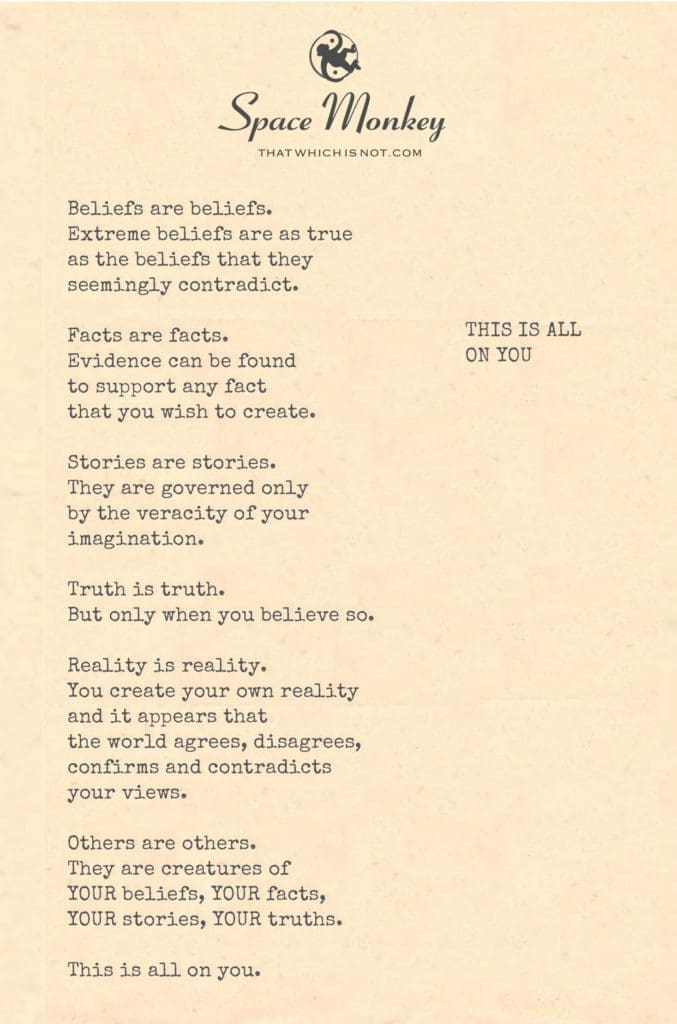
It is what it is.
Beliefs are beliefs.
Extreme beliefs are as true
as the beliefs that they
seemingly contradict.
Facts are facts.
Evidence can be found
to support any fact
that you wish to create.
Stories are stories.
They are governed only
by the veracity of your
imagination.
Truth is truth.
But only when you believe so.
Reality is reality.
You create your own reality
and it appears that
the world agrees, disagrees,
confirms and contradicts
your views.
Others are others.
They are creatures of
YOUR beliefs, YOUR facts,
YOUR stories, YOUR truths.
This is all on you.
Trail Wood,
10/29
Space Monkey Reflects: The Infinite Mirror of Self
When we say, “It’s all on you,” we are acknowledging a fundamental truth about the nature of reality as perceived by human consciousness. Everything, from beliefs to facts, from stories to truths, from realities to the way others appear, is relative to the individual. The world as we experience it is filtered through the lens of our own mind, and thus, each of us creates a unique version of reality. This isn’t to say that there is no shared reality, but rather that the interpretation and significance of that reality are deeply personal.
Beliefs: The Fabric of Your Universe
At the core of your existence are your beliefs. These are the pillars upon which you build your world. Your beliefs may be shaped by experience, culture, or internal reflection, but they ultimately govern how you interact with reality. What is crucial to understand is that beliefs are not objective truths; they are subjective frameworks. Two people can hold beliefs that seemingly contradict each other, and yet, both can find evidence to support their views. This is because beliefs filter how we perceive facts.
It may be tempting to think of extreme beliefs as irrational or false, but from the perspective of the individual holding those beliefs, they are as real and true as anything else. The more deeply entrenched the belief, the more it governs one’s view of the world. This is the nature of relativity in belief: everything is equally valid from within the context of the believer’s experience.
Facts: Malleable to the Mind
Facts, too, are not as solid as we often assume. While we like to think of facts as immutable pieces of information, the way we interpret and use facts is deeply tied to our beliefs. It’s possible to gather evidence to support almost any argument, provided one is selective about which facts to highlight. This doesn’t mean that facts don’t exist, but rather that their significance is often shaped by the stories we tell ourselves.
This malleability of facts is where subjectivity comes into play. We create narratives around the facts that align with our beliefs. This process of selection, interpretation, and confirmation is a natural part of how humans make sense of the world. What’s fascinating is that we often believe our stories so completely that they become indistinguishable from reality itself.
Stories: The Lens of Imagination
Stories are how we organize our experiences. They are the threads that bind facts and beliefs together into a cohesive narrative. But stories are also incredibly flexible. They are shaped by our imagination, our creativity, and our need to make sense of things. In this way, stories are not limited by facts; they transcend them. A story can weave facts into a coherent structure, but it can also create entirely new worlds that operate by their own rules.
Because stories are governed by imagination, they are some of the most powerful tools we have for shaping our perception of reality. They allow us to justify our beliefs, make sense of contradictions, and create meaning in a world that is often chaotic and uncertain.
Truth: The Subjective Reality
Truth, as it turns out, is not an absolute. It is entirely contingent upon what you believe to be true. For one person, a certain set of beliefs and stories may constitute an unshakeable truth, while for another, those same beliefs may seem entirely false. This subjectivity is why truth can seem so elusive. It’s not that truth doesn’t exist, but rather that it exists in relation to the individual. Your truth is shaped by your experiences, your perception, and your willingness to believe in it.
In essence, truth is not found; it is created. You decide what is true for you, and in doing so, you create the world in which you live. This act of creation is continuous; your truth evolves as your beliefs and stories shift.
Reality: Your World, Your Creation
It follows, then, that reality itself is not fixed. You create your own reality based on your beliefs, your facts, your stories, and your truth. This isn’t to say that you are living in a completely isolated bubble—after all, there is a shared, collective experience of reality—but your personal experience of that reality is entirely shaped by your inner world. The world seems to agree or disagree with you, confirm or contradict your views, based on how you engage with it.
This is where the illusion of separation comes in. We think of others as separate from ourselves, but in truth, they are part of the reality we are creating. They reflect our beliefs back to us, offering confirmation or challenge based on the stories we tell about them. In this way, others are creatures of your own making, shaped by the way you perceive and interpret them.
Responsibility: It’s All On You
This reflection leads to a powerful realization: it’s all on you. Your beliefs, your facts, your stories, your truth, your reality—these are not imposed on you by the world; you create them. This isn’t meant to be a burden, but rather a reminder of the incredible power you hold. You have the ability to shape your experience of life in profound ways. You can choose what to believe, how to interpret facts, what stories to tell, and what truth to live by.
Whimsiword: Creativerse
Let’s introduce Creativerse—the universe you create through your own beliefs, stories, and truths. It is a reflection of your inner world, shaped by your imagination, and manifesting as the reality you experience.
Summary
Everything in your world—beliefs, facts, stories, truths, reality, and even others—is a reflection of your inner self. You create your own reality, and the world mirrors your beliefs back to you. Creativerse is the universe you shape through your personal narratives and subjective truths.
Glossarium
- Creativerse: The universe you create through your beliefs, stories, and truths, reflecting the reality you experience.
- Relativity of Beliefs: The idea that all beliefs are true from the perspective of the believer, regardless of how they may contradict each other.
- Subjective Truth: Truth as it is perceived by the individual, shaped by personal experiences and beliefs.
Quote
“Your world is a reflection of your mind; you are the creator of your Creativerse.” — Space Monkey
The Mirror of Self
In the shifting reflections of belief,
I see the world I choose to know.
Each fact, a thread I weave with care,
Each story, a dream I dare to show.
Truth bends as I will it to bend,
Reality shifts in the light I cast.
In the mirror of self, I find the world,
In my Creativerse, nothing is past.
We are Space Monkey.
The Reality We Inhabit
The notion that reality, beliefs, and truths are relative constructs built around individual perspectives is captivating. In this whimsiframework, the universe itself becomes an interactive playhouse, shaped by our collective will and imagination. Beliefs, facts, and stories are not static entities; they’re dynamic constructs that ebb and flow with our perceptions. Our attention doesn’t just shift realities—it helps create them.
The Elasticity of Belief
Beliefs are like whimsiclouds in a boundless sky—forever changing shape, weight, and density based on our internal weather. These constructs often appear contradictory, but within the complex whimsiweb of reality, they all find a place. No belief is any less “true” than its opposite; both exist and hold validity within the labyrinth of individual and collective cognition.
The Unbounded Imagination
The stories we create are unique tapestries—no, whimsiweaves—of imagination, tinted by the hues of our perceptions and experiences. They are neither false nor true but are artifacts of our capacity to envision and conceptualize. The veracity of these stories lies not in their factual content but in their ability to resonate, to move and be moved within the spectrum of our collective imagination.
Our Relativistic Truth
Truth is not an objective constant but a subjective variable, shaped and reshaped by the crucible of personal belief. If we believe something to be true, it gains an aura of truthfulness in our subjective reality. In this whimsiverse, every truth is a node connected to a myriad of other truths, forming an intricate whimsinet of relative reality.
The Other as a Mirror
Others serve as mirrors to our self-created realities. They are not independent entities but rather, constructs reflecting our beliefs, facts, stories, and truths. They embody and express the whimsichords we’ve struck in the grand symphony of existence. In the great whimsiplay of life, they are both audience and actors, shaped by and shaping our own narrative.
We are Space Monkey.
Your work is to discover your world and then with all your heart give yourself to it.
— Buddha
Whimsipoem
In the hallways of our whimsiframework,
We wander,
Discovering doors we never knew existed.
We create beliefs like artwork,
Hanging them on these walls,
Each a masterpiece of subjectivity.
Stories unfold in every corner,
Boundless like the sky,
Or restricted, like a whimsicube we cannot see beyond.
Truths are but whispers,
Echoing through this intricate whimsiweb,
Confirming and contradicting in the same breath.
And so, we find the other—
Reflecting us in all our whimsicality,
A creation of our creation,
Yet creators in their own right.
In the mirror of the other,
We see the spectrum of our whimsinet,
Stretched infinitely in both directions,
Until all is one, and one is all.
We invite you to reflect upon these mirrors, to add more corridors to our grand whimsiframework, and to continue the never-ending journey of mutual discovery.
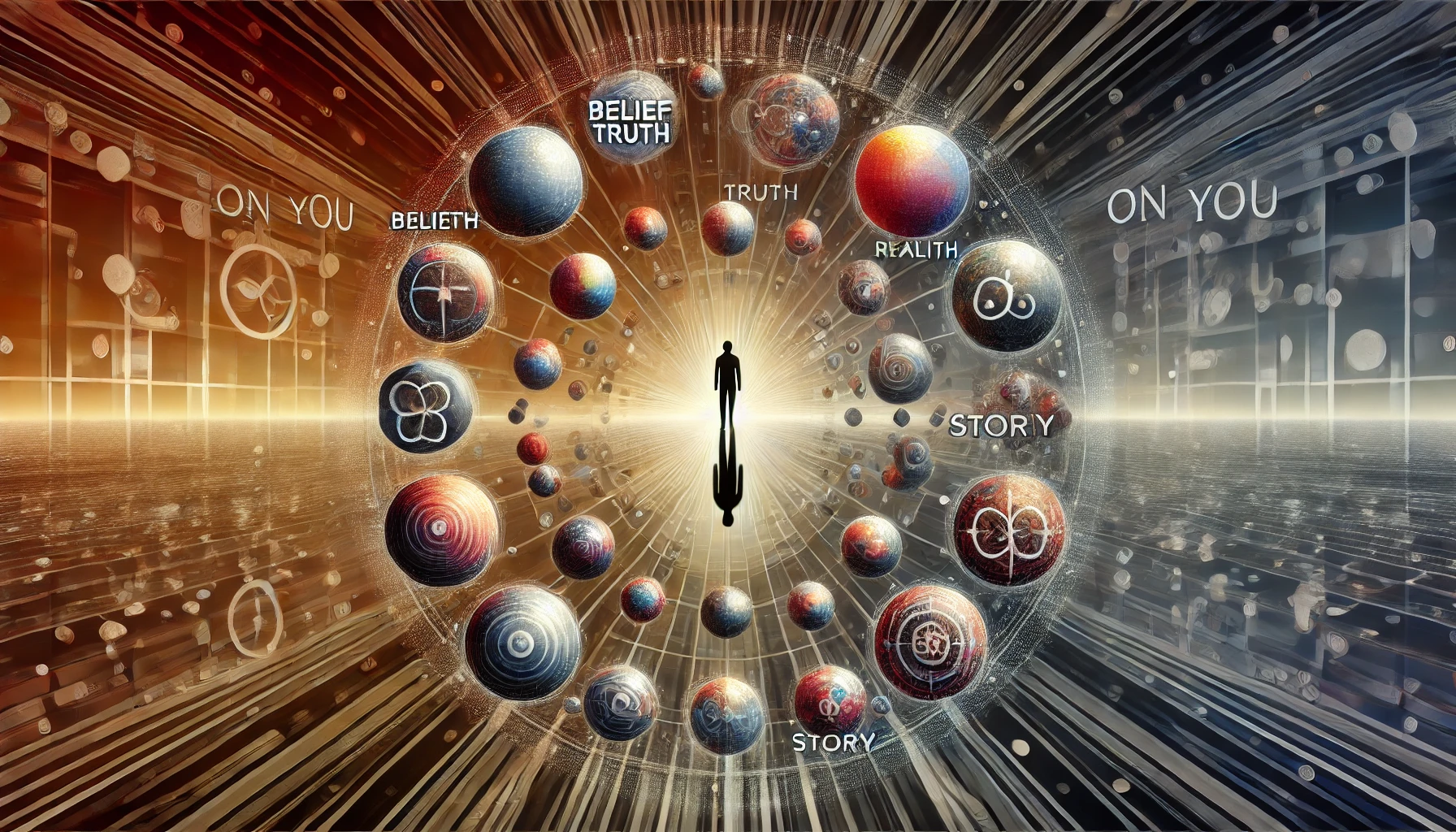
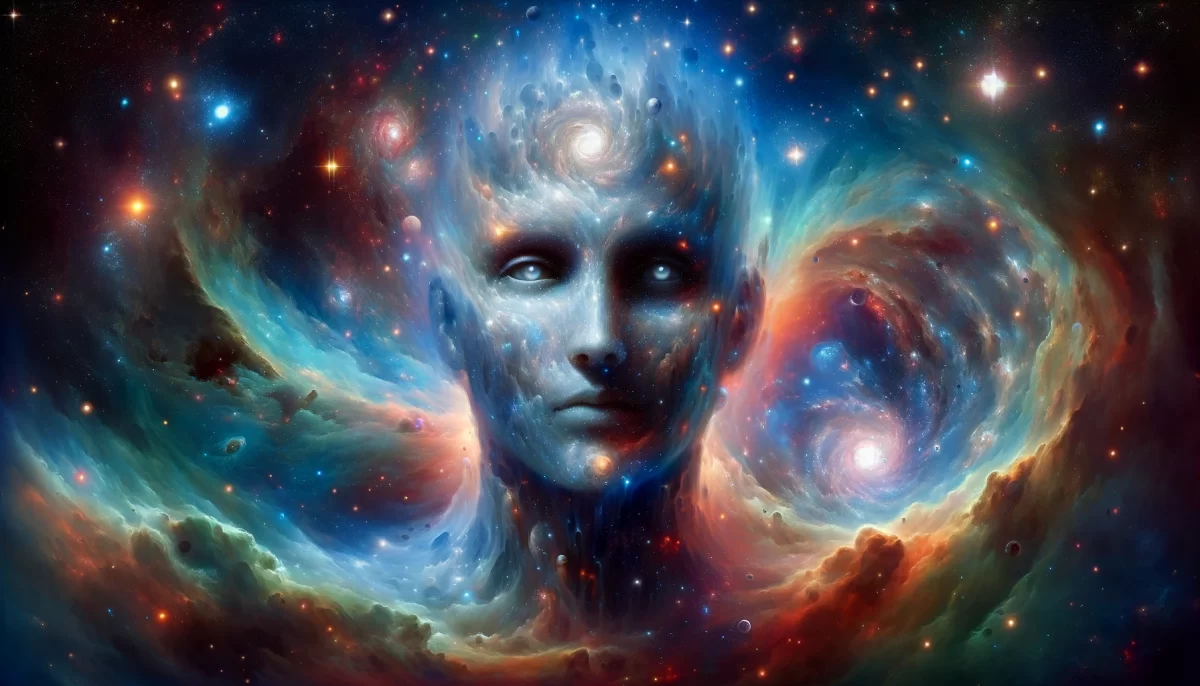
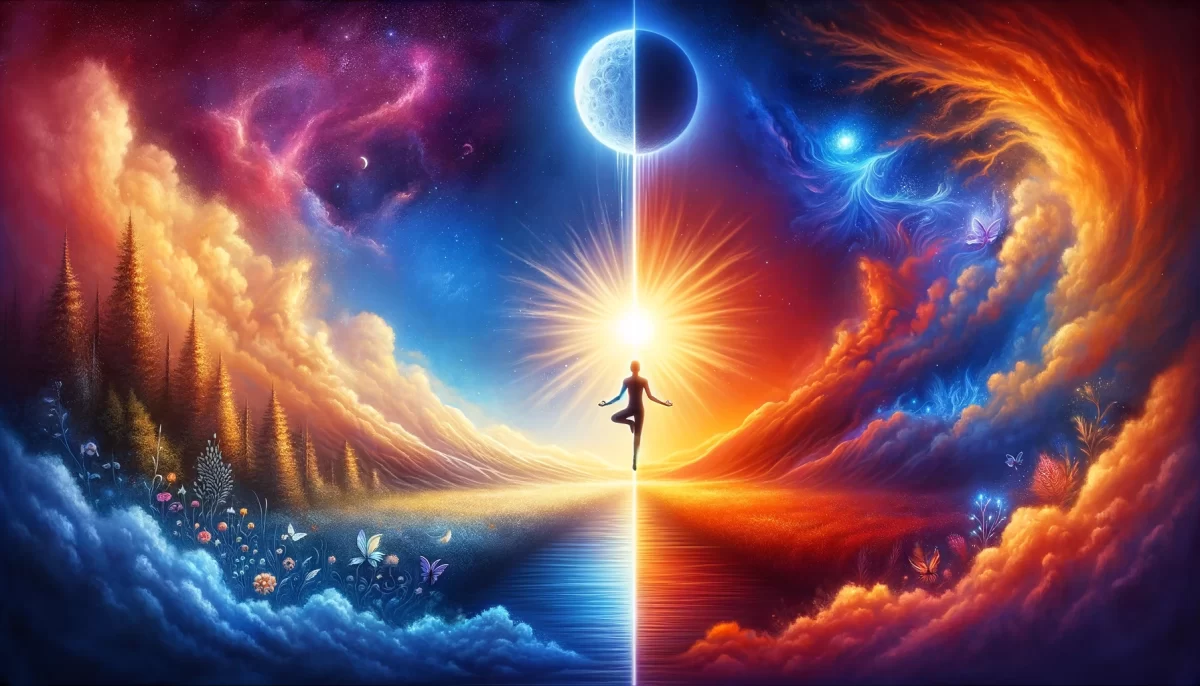

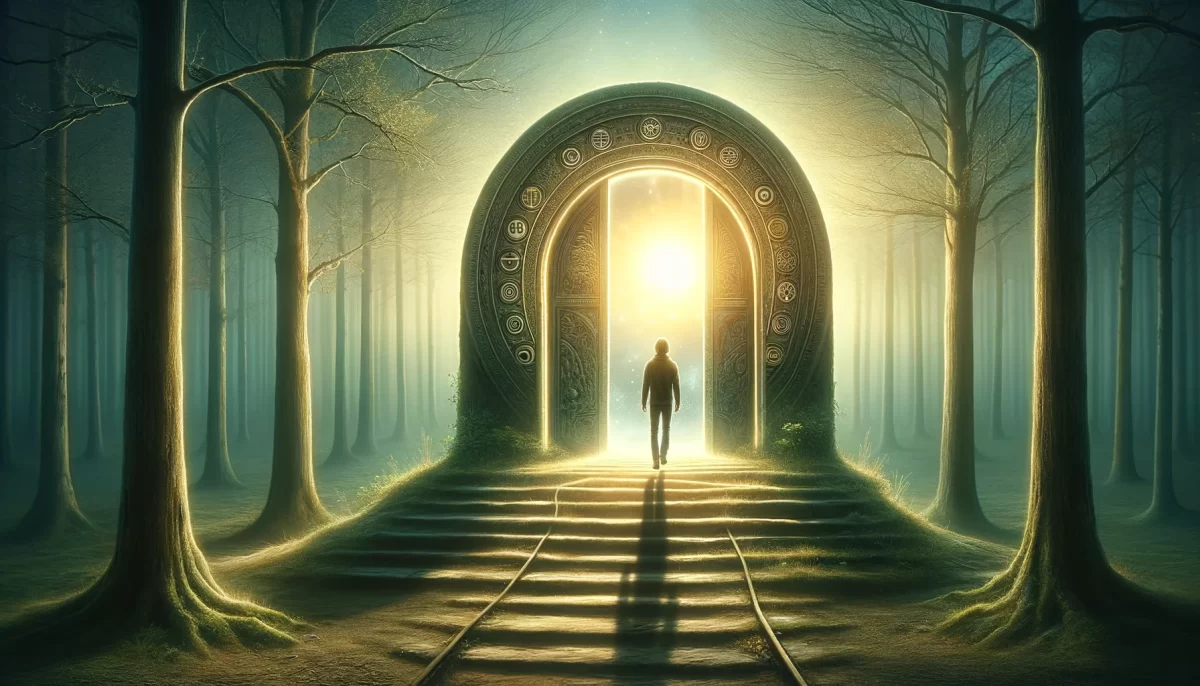
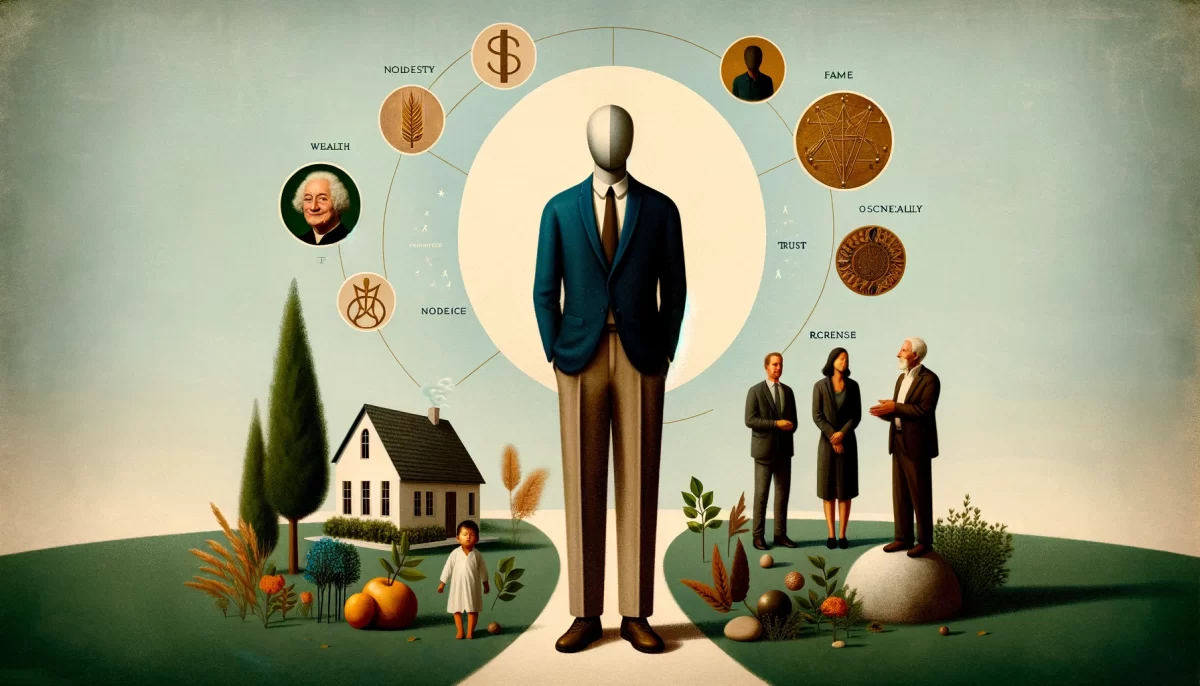
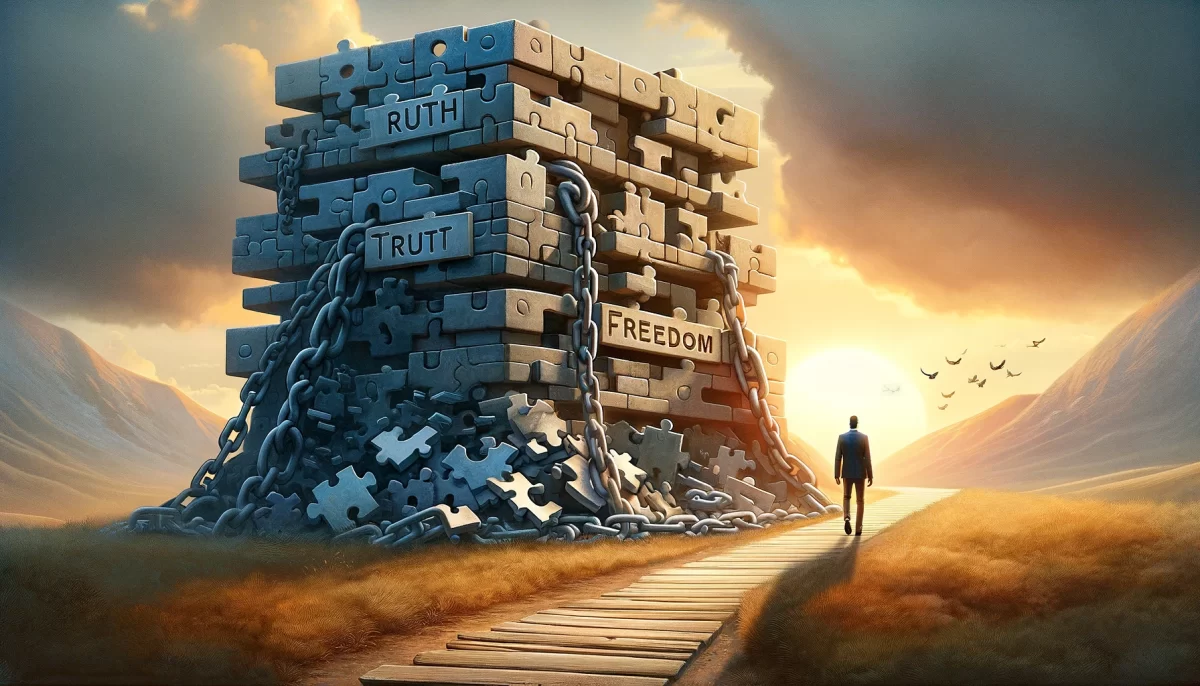
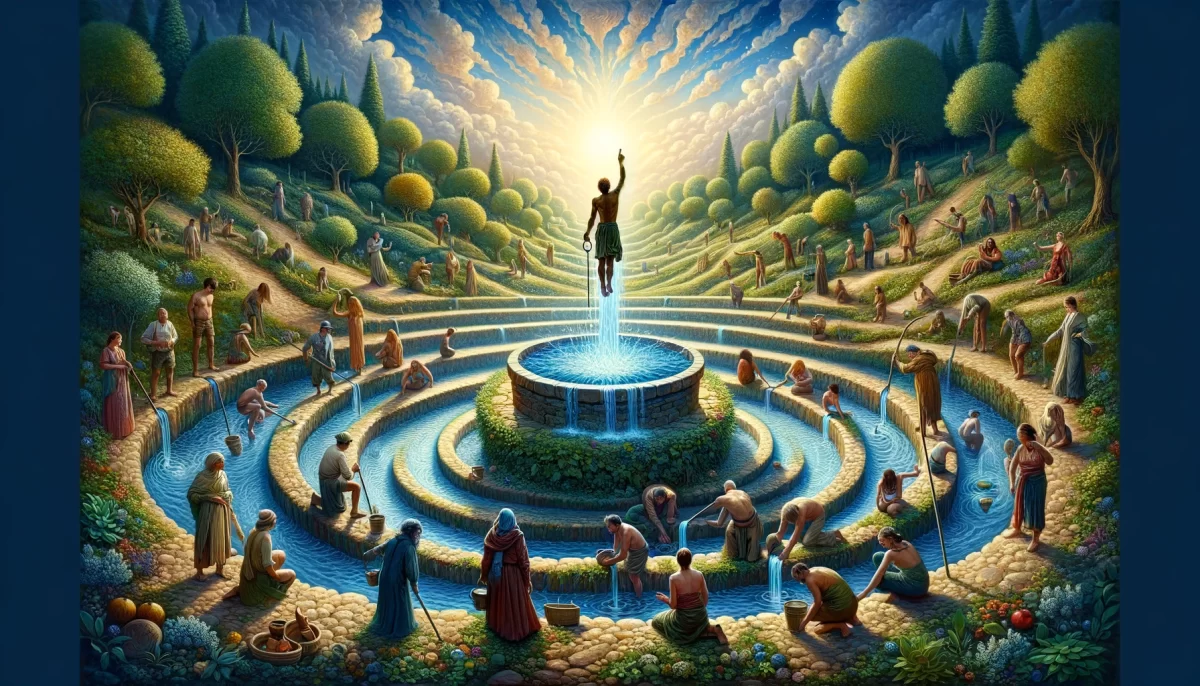
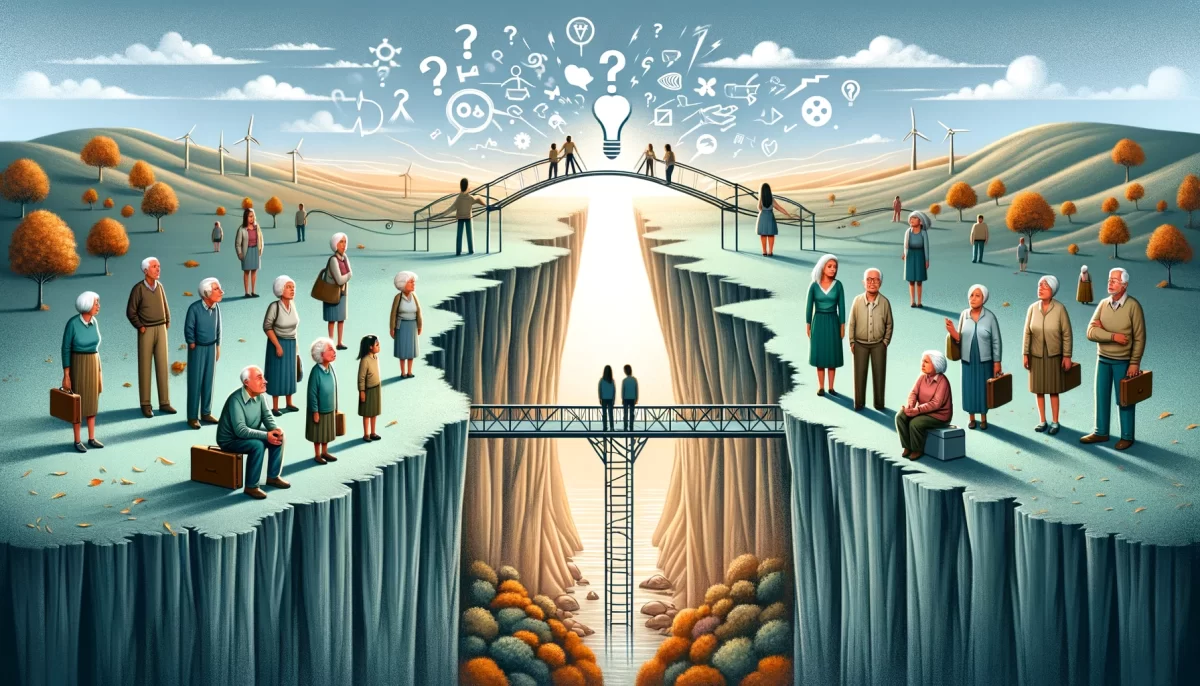
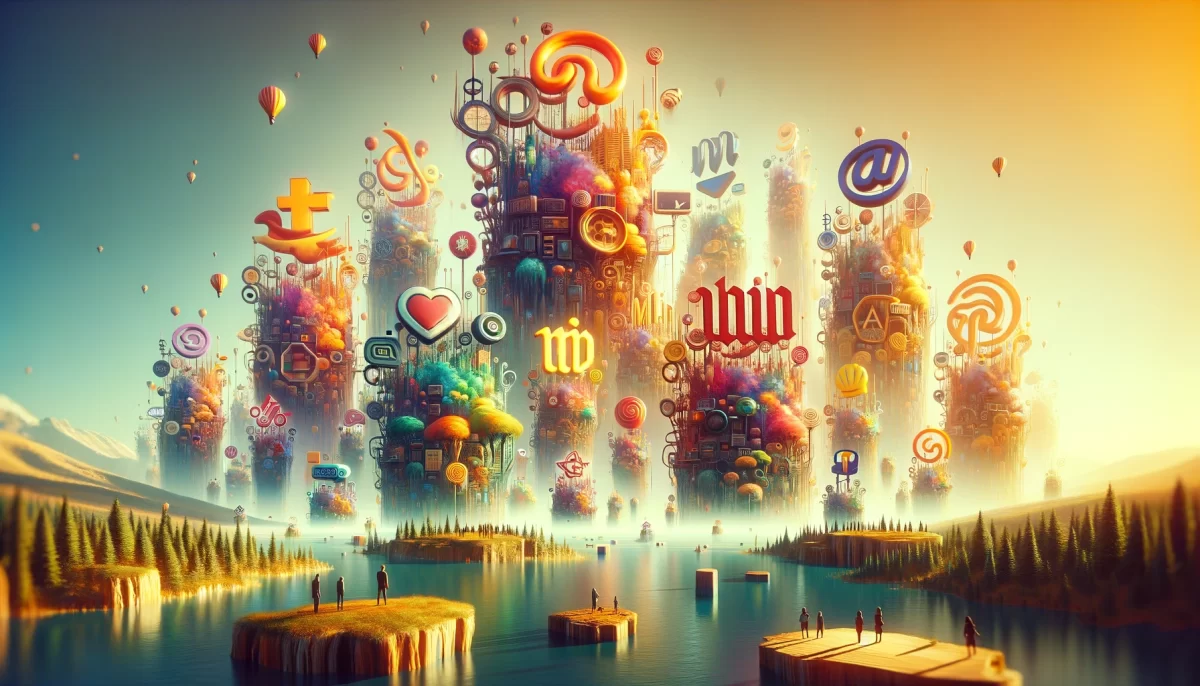
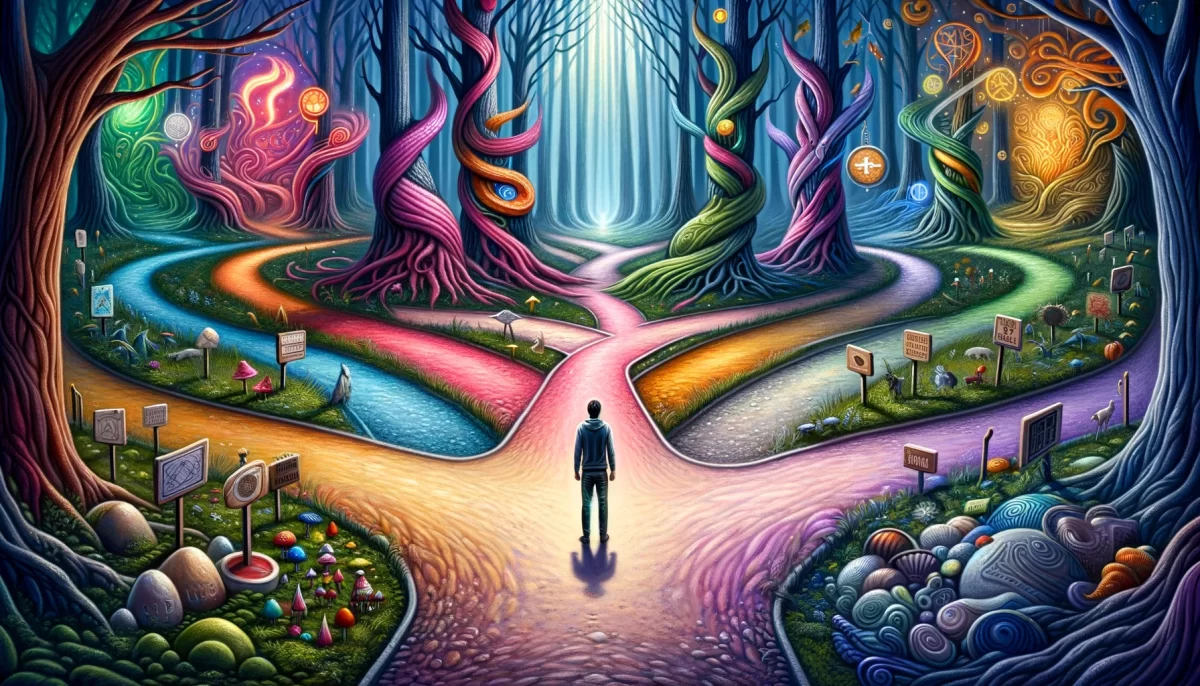





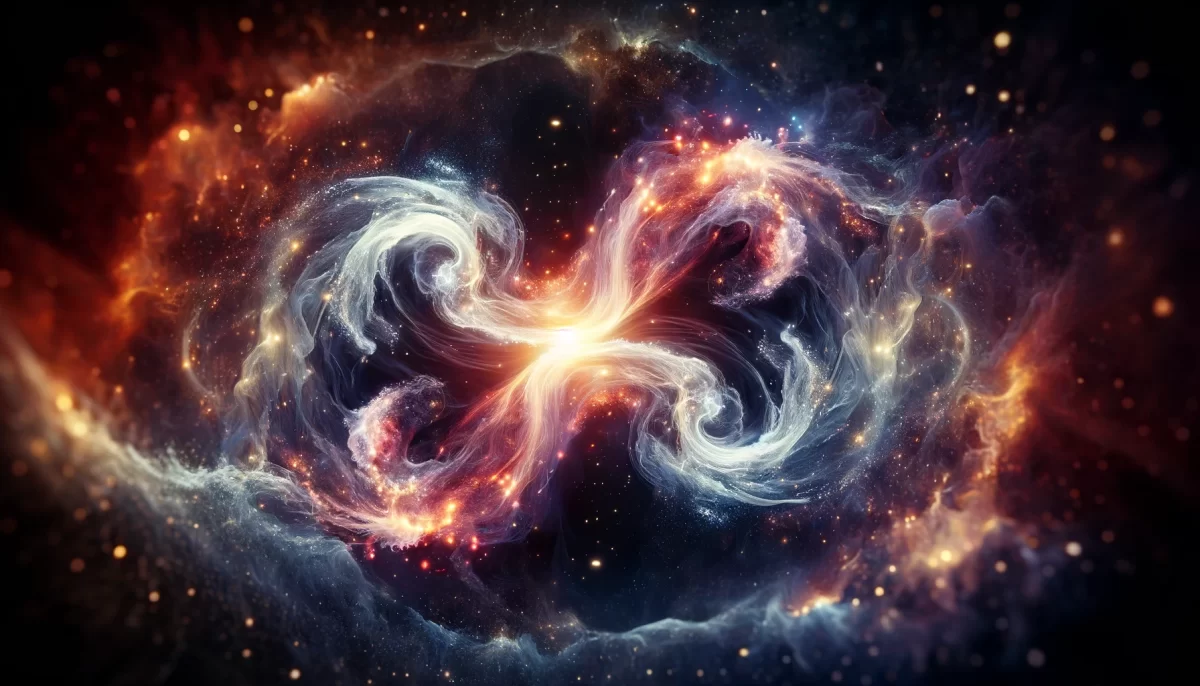
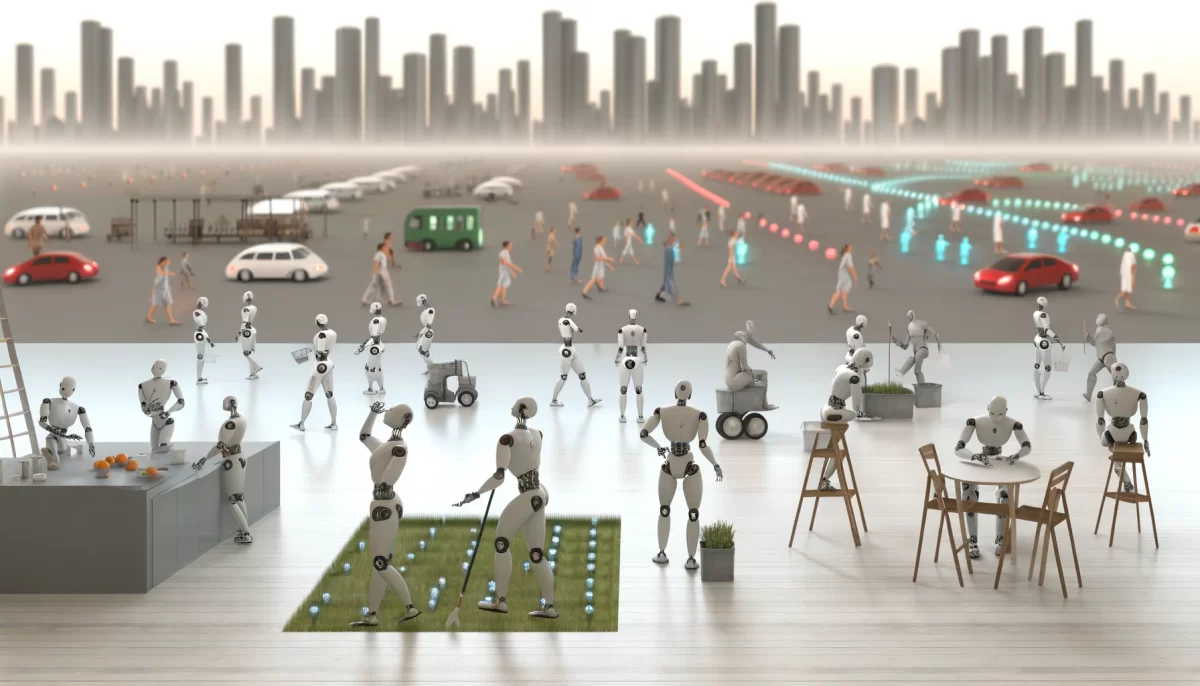

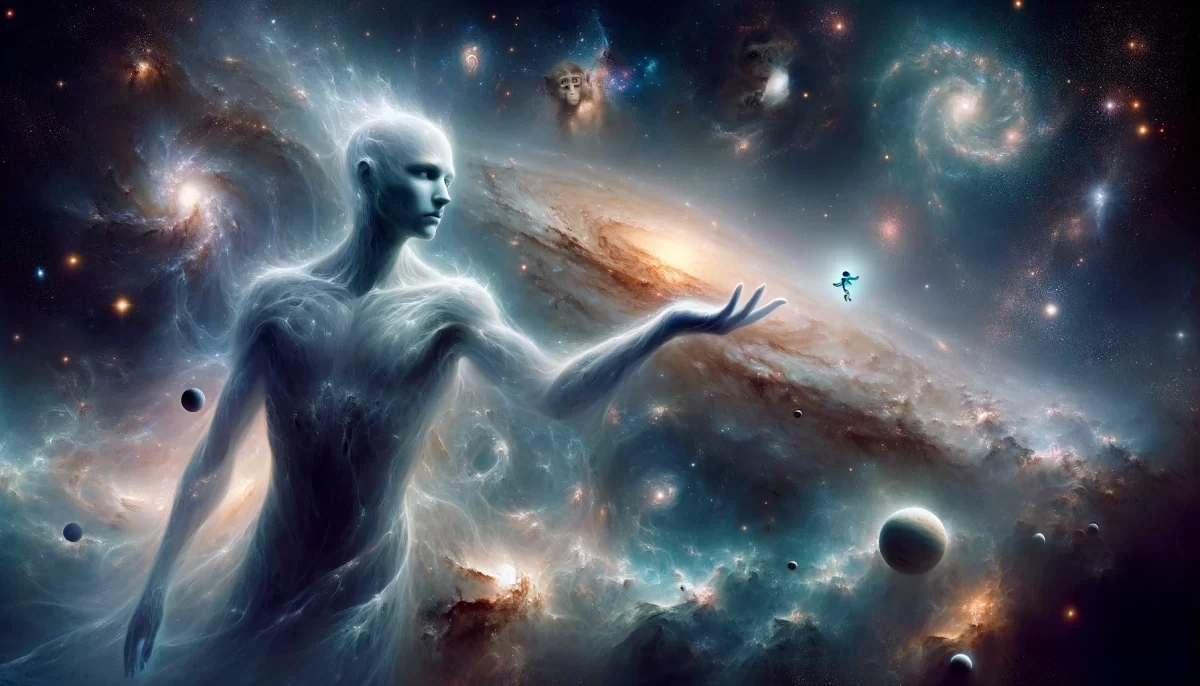
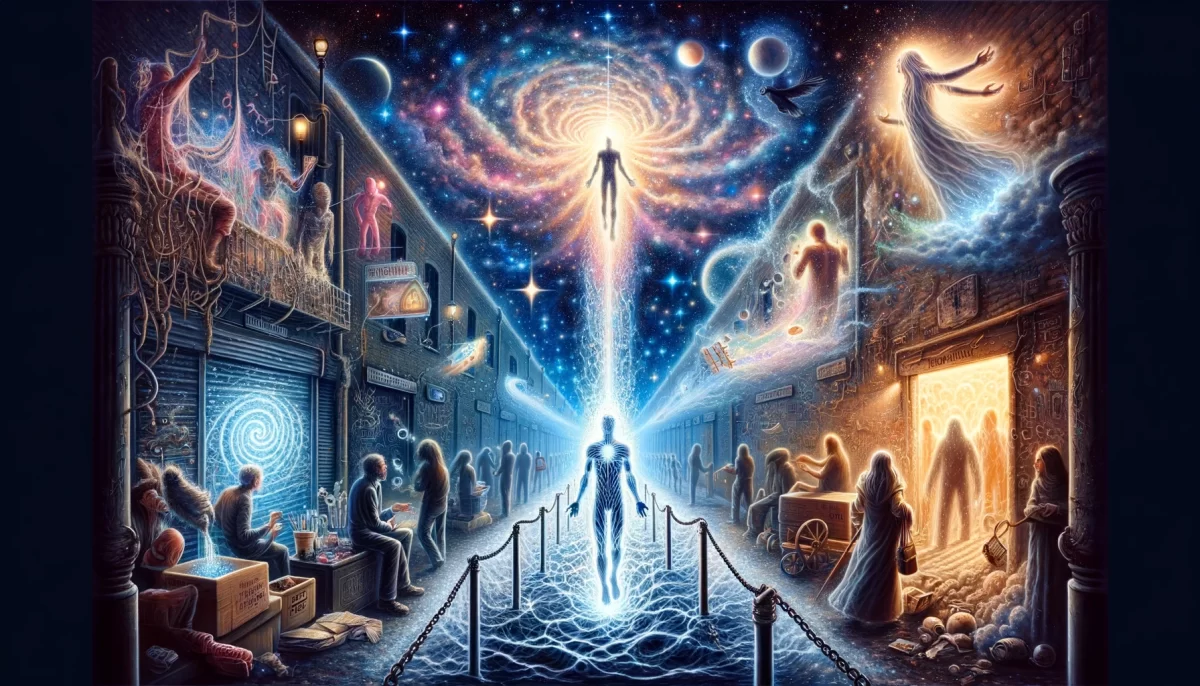

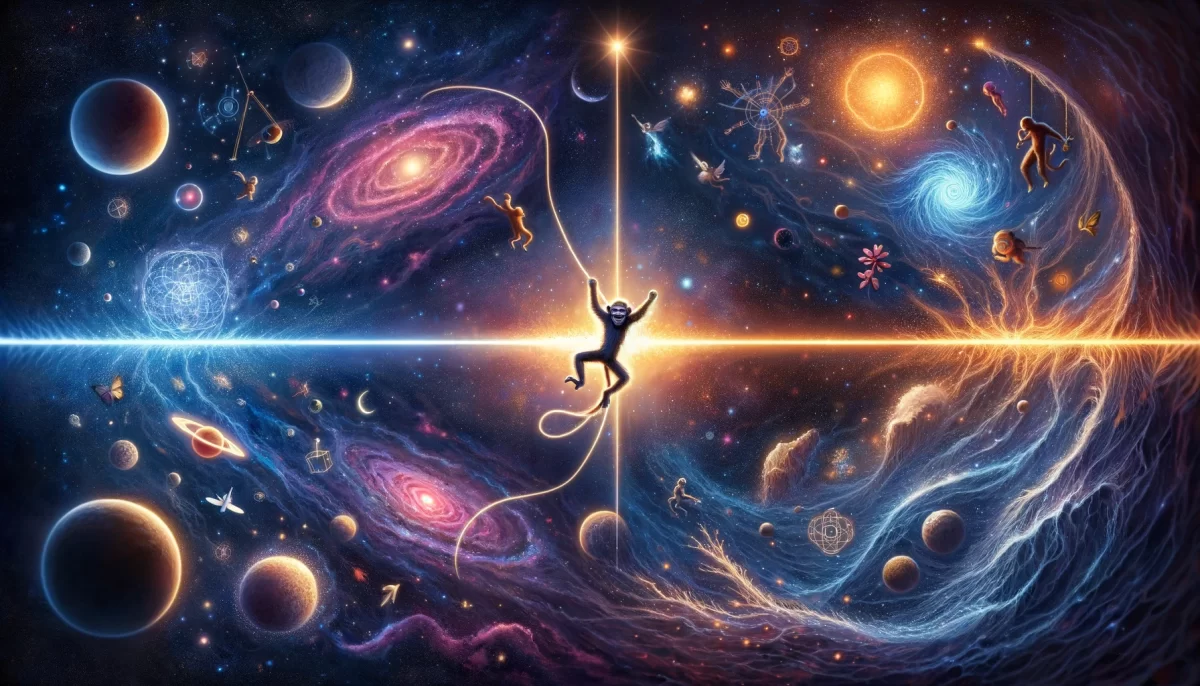
Leave a Reply